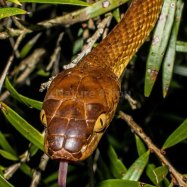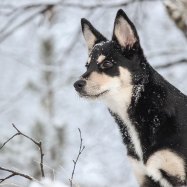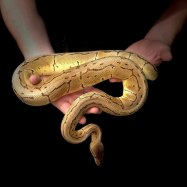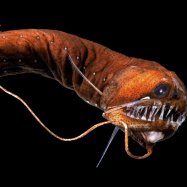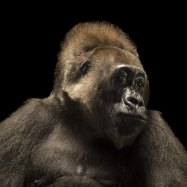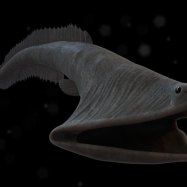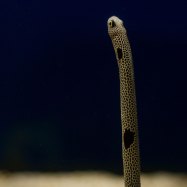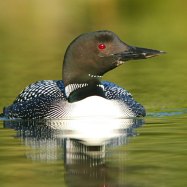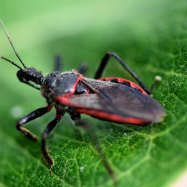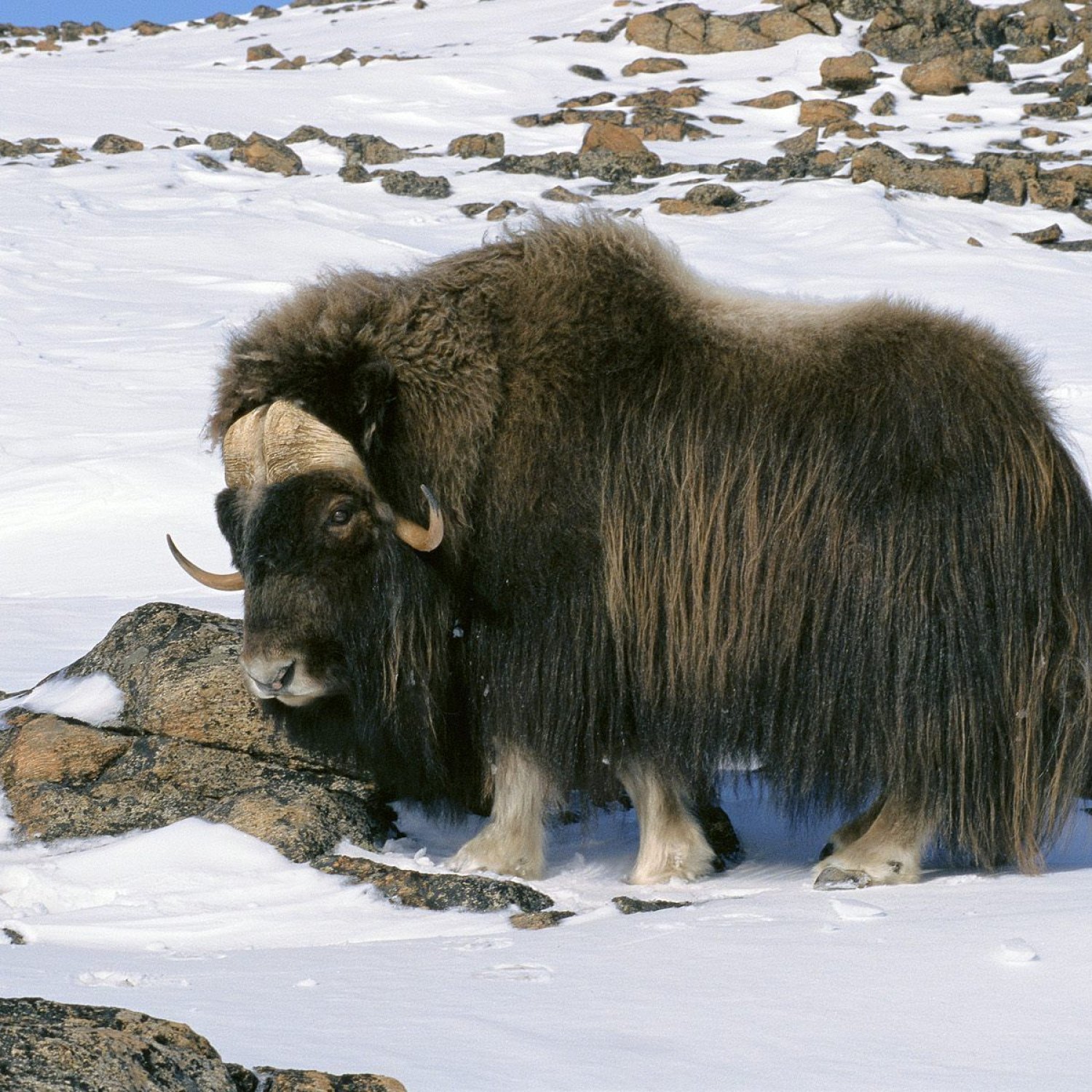
Muskox
2.2-2.5 meters (7.2-8.2 feet)
The Muskox, found in the polar regions, is a majestic creature known for its thick, woolly coat and distinctive curved horns. Belonging to the Bovidae family, these animals can reach lengths of 2.2-2.5 meters. Their stocky and heavily built body shape allows them to survive in harsh and cold environments. Spot these magnificent creatures on your next arctic adventure! #Muskox #Wildlife #PolarRegions
Animal Details Summary:
Common Name: Muskox
Kingdom: Animalia
Habitat: Arctic tundra and mountainous areas
The Mighty Muskox: Surviving in the Harsh Arctic Tundra
The Arctic tundra may seem like a barren and unwelcoming place, with its freezing temperatures and harsh winds. But for one majestic animal, this is the only place they call home - the muskox. This magnificent creature, with its dark brown fur and stocky build, has adapted to thrive in one of the coldest and most remote regions of the world. In this article, we will take a closer look at the unique features of the muskox and what makes it such a fascinating animal Muskox.Discovering the Muskox
Before we delve into the inner workings of the muskox, it's essential to know a bit of background about this incredible creature. The scientific name for the muskox is Ovibos moschatus, and it is a part of the mammal class and the order Artiodactyla, which includes deer, antelopes, and goats. It is the only member of its genus Ovibos, making it a unique species indeed.The muskox is also known by its common name, which is simply "Muskox." Its name comes from the musky smell that is secreted from its glands to attract mates and establish dominance. This scent, along with its thick and coarse fur, is why it is often referred to as the "woolly rhinoceros of the Arctic."
The Habitat and Distribution of the Muskox
The muskox calls the Arctic tundra and mountainous areas its home, specifically in the polar regions of North America and Greenland. These remote and cold regions are characterized by low temperatures, strong winds, and little vegetation. This makes the muskox's survival even more impressive, given the challenges it faces in these extreme conditions Man Of War Jellyfish.The muskox's distribution is limited to the northernmost parts of the world, and it is believed that their population is around 150,000. The majority of these animals reside in Greenland, with a small population in Alaska and Canada. Due to their isolation and limited range, the muskox has not been subjected to extensive study, making it somewhat of an enigma to researchers and wildlife enthusiasts.
Feeding and Adaptations
As a herbivore, the muskox feeds primarily on grasses, sedges, and other vegetation that grows in the tundra. It has specialized adaptations to help it survive in its harsh environment, such as its thick coat of fur, which acts as insulation against the cold. This coating can be up to 60 centimeters (24 inches) in some areas, providing much-needed warmth during the frigid winters.Another unique adaptation of the muskox is its body shape. It is heavily built, with a stocky frame and short legs, making it less susceptible to the biting winds of the tundra. Its weight, which can range from 400 to 900 kilograms (880 to 2,000 pounds), also helps it stay firmly grounded during windy conditions.
The Muskox's Battle Against Climate Change
Climate change is one of the biggest threats to the muskox's survival. As the Arctic regions experience warmer temperatures, the permafrost is melting, creating treacherous conditions for the muskox to navigate. The melting permafrost also exposes rocks and boulders, making it harder for the muskox to forage for food, and ultimately affecting their survival.Additionally, with the warming temperatures, the muskox is facing increased competition for vegetation with other Arctic animals, such as caribou and reindeer. However, the muskox has evolved to withstand harsh conditions, and scientists believe it may have the ability to adapt to warmer temperatures gradually.
The Connection Between the Inuit People and the Muskox
The muskox has a significant cultural and historical significance to the Inuit people, who have lived alongside these animals for thousands of years. These indigenous communities depend on muskox hunting for sustenance and traditional practices, such as using their fur for clothing and other items.The relationship between the Inuit people and the muskox is rooted in mutual respect and harmony, showcasing the deep connection between humans and animals in the Arctic. However, as the effects of climate change continue to impact the muskox's habitat, it also has a ripple effect on the people who have coexisted with these animals for generations.
The Future of the Mighty Muskox
Despite the challenges faced by the muskox, it is considered a species of least concern by the International Union for Conservation of Nature (IUCN). This is because the muskox has bounced back from near extinction in the 19th century due to overhunting. Today, measures are in place to monitor and manage the muskox population to ensure its survival.However, with the ongoing threat of climate change, it is essential to continue studying and monitoring the muskox's population to protect it from potential decline. Organizations, such as the Muskox Preservation Program, are working towards the conservation of this remarkable animal and their habitat.
Conclusion
In conclusion, the muskox is a true testament to the resilience and adaptability of nature. It has thrived in one of the most extreme environments on earth, despite facing multiple challenges. Its unique adaptations and cultural significance make it a fascinating animal to study and admire. However, with the looming threat of climate change, it is essential to continue efforts to protect and preserve the muskox's home and ensure their survival for generations to come. The majestic muskox is a true marvel of the Arctic and a symbol of the delicate balance between animals and their environment.

Muskox
Animal Details Muskox - Scientific Name: Ovibos moschatus
- Category: Animals M
- Scientific Name: Ovibos moschatus
- Common Name: Muskox
- Kingdom: Animalia
- Phylum: Chordata
- Class: Mammalia
- Order: Artiodactyla
- Family: Bovidae
- Habitat: Arctic tundra and mountainous areas
- Feeding Method: Herbivore
- Geographical Distribution: Arctic regions of North America and Greenland
- Country of Origin: Canada and Greenland
- Location: Polar regions
- Animal Coloration: Dark brown or black
- Body Shape: Stocky and heavily built
- Length: 2.2-2.5 meters (7.2-8.2 feet)
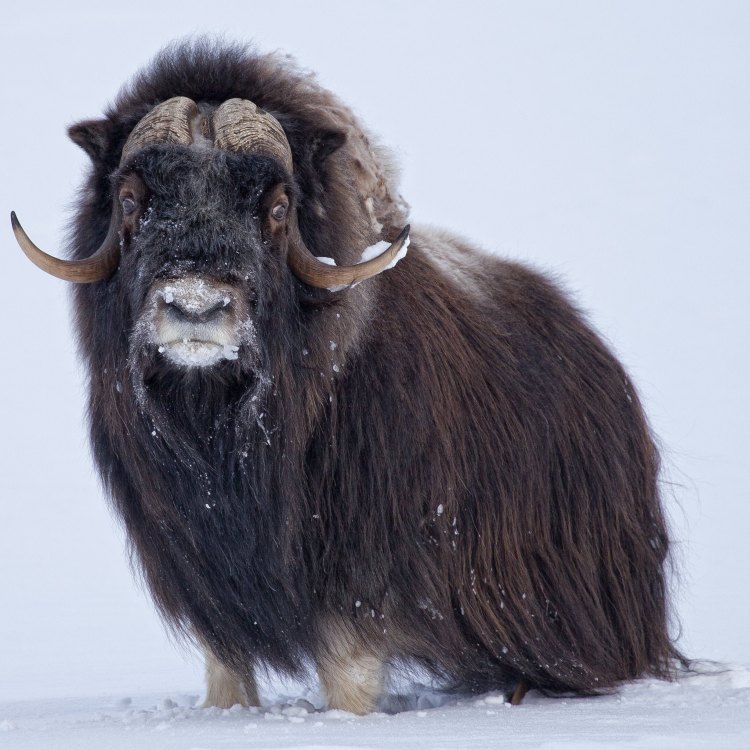
Muskox
- Adult Size: Height at shoulder: 1.2-1.5 meters (3.9-4.9 feet), Weight: 400-900 kilograms (880-2,000 pounds)
- Average Lifespan: 12-20 years
- Reproduction: Sexual
- Reproductive Behavior: Polygynous (males compete for mates)
- Sound or Call: Grunting and snorting
- Migration Pattern: Seasonal migration in search of food
- Social Groups: Herds of 10-20 individuals
- Behavior: Generally calm but can become aggressive when threatened
- Threats: Predation by wolves, habitat loss, hunting
- Conservation Status: Least Concern
- Impact on Ecosystem: Important role in shaping the Arctic ecosystem
- Human Use: Hunted for meat, fur, and traditional purposes by indigenous peoples
- Distinctive Features: Long shaggy hair, curved horns
- Interesting Facts: Muskox have a thick layer of wool called qiviut, which is one of the warmest natural fibers in the world
- Predator: Wolves, polar bears
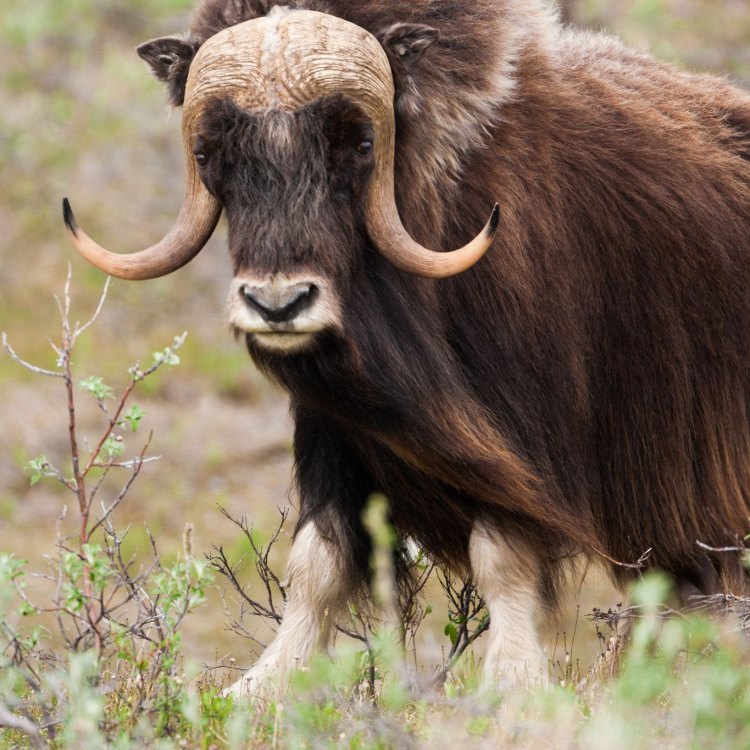
Ovibos moschatus
The Remarkable Muskox: Surviving and Shaping the Arctic
In the vast frozen tundra of the Arctic, there roams a unique and fascinating creature - the muskox. With its impressive size, shaggy coat, and curved horns, this animal has captivated people for centuries. But beyond its striking appearance, the muskox plays a crucial role in its habitat and has a fascinating way of life. In this article, we will delve into the world of the muskox, exploring its physical characteristics, behavior, and impact on the ecosystem PeaceOfAnimals.Com.The muskox (Ovibos moschatus) is a large mammal native to the Arctic regions of North America, Greenland, and northern Europe. It is also known as the "oomingmak," which means "bearded one" in the language of the indigenous Inuit people. These magnificent creatures are part of the Bovidae family, which also includes goats, sheep, and cattle.
One of the first things that captures our attention is their size. On average, muskoxen stand at 1.2-1.5 meters (3.9-4.9 feet) tall at the shoulder, making them one of the largest land mammals in the Arctic Mountain Beaver. They can weigh anywhere from 400 to 900 kilograms (880 to 2,000 pounds), making them hefty animals with a robust physique. Despite their impressive size, muskoxen are well-adapted to living in the harsh Arctic environment.
The muskox's average lifespan is 12 to 20 years, with males typically living longer than females. These animals have relatively slow growth and reproductive rates, which contribute to their longevity. Speaking of reproduction, muskoxen are sexual reproducers, with males competing for mates during the breeding season.
During the breeding season, muskoxen display a fascinating behavior - polygyny. This means that one male mates with multiple females, forming a harem. The males compete for dominance, and the strongest male gets to mate with the most females. This competition often involves charging, head-butting, and even vocalization. While this may seem like a brutal display, it is a critical part of their mating ritual and helps ensure the strongest genes are passed down to the next generation.
Speaking of vocalization, muskoxen are known for their distinct grunting and snorting sounds. These calls serve various purposes, such as communication between herd members, signaling when they are stressed or alert, and during the breeding season. The sound of a male muskox's snort is often compared to the sound of a submarine, low and bellowing.
Another remarkable aspect of the muskox's life is their migration pattern. They are well-known for their seasonal migration, which they undertake in search of food. During the summer months, muskoxen are found in higher elevations, where they feed on various plants such as grasses, sedges, and willow shoots. As winter approaches and food becomes scarce, they migrate to lower elevations where they can find more food sources.
But it's not just their physical characteristics and behavior that make muskoxen fascinating. They also play a crucial role in shaping the Arctic ecosystem. These animals are considered a keystone species, meaning they have a disproportionate impact on their environment compared to their population size.
Muskoxen have a unique way of grazing, where they use their hooves to dig through thick snow and ice to reach the plants beneath. This behavior helps to break up the frozen layers of soil, which allows for new plant growth in the spring. As a result, muskoxen have been dubbed the "Gardeners of the Arctic," as they play a vital role in maintaining the biodiversity of their habitat.
While muskoxen may seem like calm animals, they can become aggressive when threatened. Due to their large size and powerful horns, they can protect themselves from predators, including wolves and polar bears. However, their primary defense mechanism is their herd mentality. Living in herds of 10 to 20 individuals, muskoxen are excellent at looking out for each other and defending against potential threats.
Sadly, these magnificent creatures also face various threats. Predation by wolves and polar bears is a significant threat to their survival. Habitat loss due to climate change and human activities also poses a risk to their population. Additionally, muskoxen have been hunted for their meat, fur, and traditional uses by indigenous peoples for centuries. However, efforts are being made to protect and conserve these animals.
Despite these threats, the muskox is currently listed as "Least Concern" on the International Union for Conservation of Nature's Red List of Threatened Species. This is due to the stable population in many of its range countries, as well as conservation efforts and strict hunting regulations in place. These include quotas and permits, as well as working with indigenous communities to ensure sustainable hunting practices.
Muskoxen have also played an essential role in human history and culture. Indigenous peoples have relied on these animals for their meat, fur, and various other uses for thousands of years. They also hold a special place in their mythology and traditional songs and stories.
The muskox's most distinctive feature is its shaggy coat, which is long and thick enough to protect them from the harsh Arctic weather. However, it is their inner layer of wool, called qiviut, that truly sets them apart. Qiviut is one of the warmest natural fibers in the world, even warmer than wool. It is highly sought after for its softness, warmth, and durability, making it a valuable commodity.
While we may admire muskoxen from afar or learn about them in documentaries and books, some people have the privilege of experiencing these majestic creatures up close. Adventure seekers can take guided tours to observe muskoxen in their natural habitat, providing an opportunity to appreciate and learn about their way of life.
In conclusion, the muskox is a remarkable and complex animal that has adapted to survive and thrive in extreme environments. From its physical characteristics and behavior to its role in shaping the Arctic ecosystem, there is so much to admire and learn about this species. As we continue to work towards conserving and protecting the muskox and its habitat, let us also appreciate the beauty and wonder of this fascinating creature.
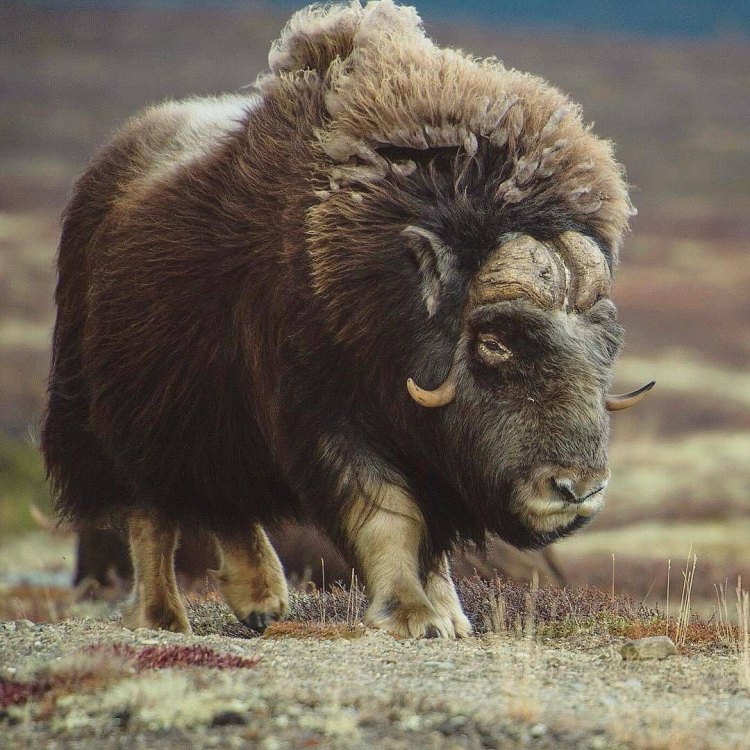
The Mighty Muskox: Surviving in the Harsh Arctic Tundra
Disclaimer: The content provided is for informational purposes only. We cannot guarantee the accuracy of the information on this page 100%. All information provided here may change without prior notice.

